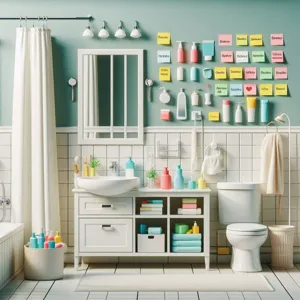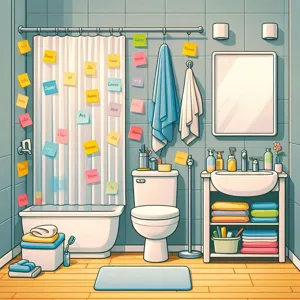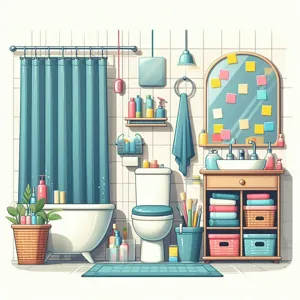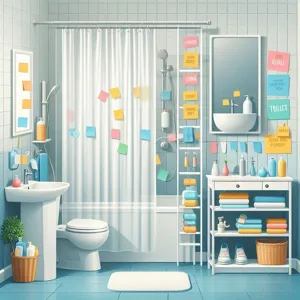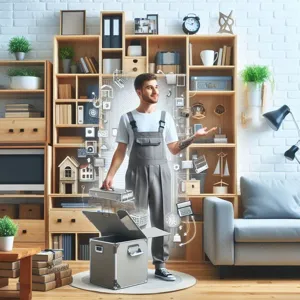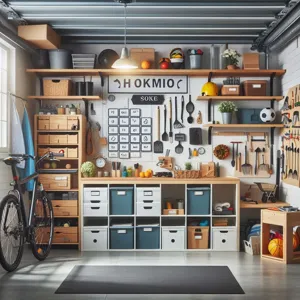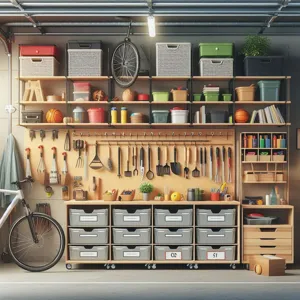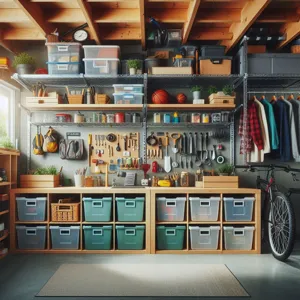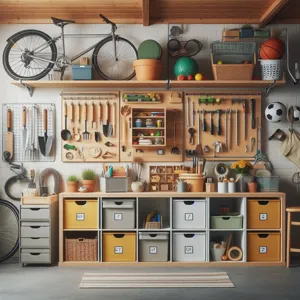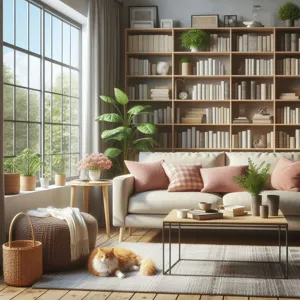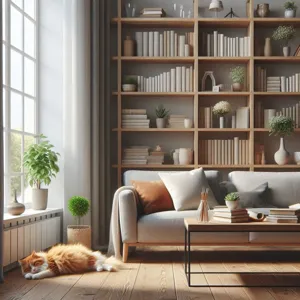Embarking on a motorbike adventure is not just about the thrill of the ride; it’s also about the journey and the experiences that await you along the way.
However, the freedom of the open road comes with the challenge of packing efficiently for your trip. With limited space and the need for essentials, knowing how to pack smart can make all the difference in your adventure. In this blog post, we’ll dive into essential packing tips that will help you streamline your gear while ensuring you have everything you need for a comfortable and enjoyable ride. From selecting the right luggage to choosing versatile clothing and gear, discover how to ride smart and pack light so you can focus on the stunning vistas and the exhilarating freedom of the road ahead. Get ready to hit the asphalt with confidence and style, knowing you’re well-prepared for any challenge that comes your way!
1. Understanding Your Motorcycle’s Storage Capacity

Before you set off on your next motorbike adventure, it’s vital to understand the storage capacity of your motorcycle. Unlike cars, which often boast ample trunk space and room for various gear, motorcycles come with their own set of limitations. Assessing your bike’s carrying capabilities will greatly influence how you pack for your journey.
Start by taking a close look at your motorcycle’s built-in storage options. Many bikes come equipped with saddlebags, top cases, or even tank bags that can accommodate essentials such as tools, spare clothing, and personal items. Knowing the dimensions and weight limits of these compartments will help you make informed decisions about what to take along.
For those riding touring bikes, you may have more built-in storage than a sport bike or cruiser, which might only have minimal space. If your bike lacks sufficient storage, consider investing in additional luggage solutions like soft panniers or a tail bag. These can expand your carrying capacity without sacrificing convenience or balance.
It’s also essential to understand the weight distribution on your motorcycle. Properly balancing your load will not only enhance your riding experience but also ensure safety on the road. Position heavier items closer to the center of the bike and distribute weight evenly to maintain stability. Avoid overloading your motorcycle, as this can affect handling and braking, especially on winding roads or during challenging weather conditions.
Lastly, keep in mind that packing light is key to a comfortable ride. Prioritize essentials and consider versatile items that can serve multiple purposes. By fully understanding your motorcycle’s storage capacity and packing smartly, you’ll be well on your way to an exhilarating adventure—free from the worry of excess baggage weighing you down!
2. Choosing the Right Luggage for Your Adventure
When it comes to selecting the right luggage for your motorbike adventure, the choices can feel overwhelming. However, the right gear can make all the difference in ensuring a smooth ride and an enjoyable experience. First and foremost, consider the type of riding you’ll be doing—whether it’s a weekend getaway, a cross-country trip, or an off-road escapade. This will help determine what type of luggage best suits your needs.
Soft saddlebags are a popular choice for their lightweight design and flexibility; they can easily adjust to fit the contours of your bike and can be packed tight without adding unnecessary bulk. On the other hand, hard cases provide superior protection for your gear, keeping it safe from the elements and potential impacts. Whichever option you choose, ensure the luggage is compatible with your motorbike model and securely fastened to prevent any swaying or shifting during your journey.
Next, think about the size and capacity of your luggage. While it might be tempting to opt for larger bags to accommodate everything you think you might need, it’s essential to strike a balance. Remember, the goal is to ride smart and pack light! Aim for a setup that allows you to carry the essentials without adding excess weight that could hinder your bike’s performance.
Don’t forget to explore additional storage solutions like tank bags or tail bags, which can provide quick access to items you need on the go, such as maps, snacks, or a camera for those stunning roadside vistas. Lastly, consider weather resistance; investing in waterproof bags or adding rain covers can save you from the hassle of soggy gear and help you stay focused on the road ahead.
In sum, choosing the right luggage is about functionality, compatibility, and clever packing strategies. With the right gear, you’ll be well-prepared for whatever your adventure throws your way, allowing you to embrace the freedom of the open road with confidence.
3. Essential Gear: What to Pack for Safety and Comfort
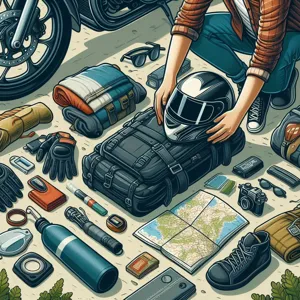
When embarking on a motorbike adventure, the right gear can make all the difference between a smooth ride and a challenging experience. Prioritizing safety and comfort not only enhances your journey but also ensures that you’re prepared for any situation that may arise on the road. Here’s a concise guide on the essential gear you should pack for your next ride.
**Safety First:** Your safety should always come first, so investing in high-quality protective gear is non-negotiable. Start with a DOT-approved helmet that fits snugly yet comfortably. Look for one with features like a sun visor and ventilation to keep you cool during those long stretches under the sun. Next, don’t skimp on riding jackets and pants made from durable materials like leather or textile. These should come with built-in armor at the elbows, shoulders, and knees to protect against impacts and abrasions.
**Comfort Matters:** Comfort plays a crucial role in enjoying your ride. Consider packing moisture-wicking base layers to keep you dry and comfortable, along with a good pair of riding gloves that provide a firm grip on the handlebars. Sturdy, waterproof boots that offer ankle support are essential, especially if you encounter varied terrains or weather conditions.
**Tools and Essentials:** No adventure is complete without the right tools and emergency supplies. A basic toolkit should be on your packing list to handle minor repairs on the go, along with a tire repair kit and a first-aid kit for unforeseen emergencies. Don’t forget to bring along a portable phone charger or power bank to keep your navigation and communication devices powered up.
**Weather Preparedness:** Lastly, always be prepared for changing weather conditions. Pack a lightweight, waterproof rain suit to keep you dry in unexpected downpours, and a pair of thermal liners or extra layers to stay warm during chilly rides.
By carefully selecting your gear with an emphasis on safety and comfort, you can ride smart and pack light, allowing you to fully enjoy the freedom of the open road without unnecessary worries. Remember, the right preparation enhances not just your journey but also your overall experience on your motorbike adventure!
4. Clothing Choices for Varying Weather Conditions
When embarking on a motorbike adventure, the right clothing can make all the difference in ensuring a comfortable and enjoyable ride. Given the unpredictability of weather, it’s essential to pack wisely and prepare for varying climatic conditions.
Start with a multi-layered approach. Base layers made from moisture-wicking materials are ideal for keeping sweat at bay and providing thermal insulation in cooler temperatures. Choose lightweight, breathable fabrics that can be easily rolled up and stowed away when not in use. For the middle layer, opt for fleece or a light insulated jacket that can provide warmth without bulk.
Next, invest in a high-quality, waterproof outer layer. A good riding jacket not only protects you from wind and rain but also features ventilation zippers for warmer days. Look for pants that are both durable and weather-resistant; many options come with removable liners that adapt to changing temperatures.
Don’t forget about accessories! A sturdy pair of gloves is essential for grip and protection, but make sure they are suitable for different weather conditions. Consider packable rain gear, like a poncho or lightweight rain suit, which can be easily stored in your saddlebag.
Finally, remember that foot comfort is paramount. Choose sturdy, waterproof boots that provide adequate ankle support and are suitable for both riding and walking. If your adventure includes stops in warmer locales, a pair of breathable riding shoes or sandals can be a welcome change.
By carefully selecting your clothing options and being prepared for the elements, you can focus on the thrill of the ride, knowing you’re equipped for whatever Mother Nature throws your way. Pack light, ride smart, and enjoy every moment of your motorbike adventure!
5. The Importance of Lightweight and Compact Packing

When embarking on a motorbike adventure, the mantra “ride smart, pack light” becomes paramount. The key to an enjoyable and hassle-free journey lies in understanding the importance of lightweight and compact packing. Unlike a car, a motorcycle has limited storage space and balancing your load is crucial for both handling and safety. Every item you carry should have a purpose, and every gram counts.
Imagine cruising down winding roads, the wind in your hair and the thrill of freedom at your fingertips. Now, picture the discomfort of a heavy, unbalanced load that hinders your movement or causes fatigue. Packing light not only enhances your riding experience but also affects your bike’s performance. A heavy ride can lead to sluggish acceleration, decreased fuel efficiency, and even difficulties in braking.
To achieve this balance, start by selecting versatile clothing that can be layered and mixed, allowing for multiple outfits in minimal space. Opt for compact camping gear, such as a lightweight tent, sleeping bag, and portable stove, all designed to minimize bulk without sacrificing comfort. Additionally, consider investing in high-quality, multi-functional tools that can serve several purposes, reducing the need for individual items.
Ultimately, lightweight and compact packing is about smart choices. It’s an art that allows you to embrace the adventure while maintaining the agility and freedom that motorbiking promises. With every item thoughtfully chosen and neatly stowed, you’ll be ready to hit the road with confidence, knowing you’ve packed efficiently for the journey ahead. So, gear up, pack light, and prepare for the thrill of the ride!
6. Packing Techniques: Rolling vs. Folding
When it comes to packing for your next motorbike adventure, the way you organize your gear can significantly impact your comfort and efficiency on the road. Two popular packing techniques that travelers often debate are rolling and folding. Each method has its advantages, so understanding how they work can help you make the best choice for your journey.
**Rolling**: This technique is a favorite among seasoned travelers for a reason. Rolling your clothes tightly not only saves space but also helps minimize wrinkles, allowing you to arrive at your destination looking fresh. By creating compact rolls, you can fit more items into your saddlebags or backpack, making it easier to manage weight distribution on your bike. Additionally, rolled clothing is easier to access; you can simply pull out a roll without disturbing the entire contents of your bag. For the ultimate efficiency, consider using packing cubes designed for rolling, which can further streamline your process.
**Folding**: While rolling has its perks, folding has its own benefits that shouldn’t be overlooked. For items like dress shirts or jackets that need to maintain a certain structure, traditional folding is still the way to go. It helps keep these garments sharp and presentable, particularly if you’re planning to stop at a nice restaurant along the route. Moreover, folded items can be stacked neatly, making it easier to find what you need without rummaging through your bag. For those who prefer a more organized approach, folding allows you to compartmentalize your gear, making it easier to locate specific items while on the go.
Ultimately, the best packing technique may involve a combination of both methods. Use rolling for casual wear and bulkier items like t-shirts and pants, while reserving folding for more delicate clothing. Experiment with both techniques prior to your trip to see what suits your style and needs best. Remember, the goal is to ride smart and pack light, ensuring you have everything you need without the bulk that can weigh you down. Happy travels!
7. Creating a Packing List: What You Really Need

Creating a packing list is a crucial step in ensuring a smooth and enjoyable motorbike adventure. With limited space on your bike, it’s essential to prioritize what you really need and avoid overloading yourself with unnecessary items. Start by breaking down your list into categories: clothing, tools, camping gear, food, and personal items. This will help you visualize your needs and keep everything organized.
When it comes to clothing, think layers. Opt for lightweight, moisture-wicking fabrics that can be easily mixed and matched. A good rule of thumb is to pack versatile pieces that can serve multiple purposes—like a jacket that keeps you warm during chilly mornings but can also be packed away for the afternoon sun. Don’t forget essential riding gear: a durable jacket, gloves, and riding pants are non-negotiable for your safety.
Next, consider the tools and maintenance items. A basic repair kit, including tire levers, a patch kit, and a multi-tool, can save you from getting stranded in the middle of nowhere. It’s also wise to bring along a small first aid kit for any minor scrapes or bumps along the way.
For camping gear, focus on lightweight options that are easy to pack. A compact tent, sleeping bag, and portable stove can create a home away from home without taking up too much space. Remember to bring non-perishable food items that are easy to prepare. Energy bars and dehydrated meals can be great options when you’re on the move.
Finally, consider personal items that will enhance your journey. A small notebook or journal can help you document your adventure, while a portable charger ensures that your devices remain powered for navigation and communication.
By carefully crafting your packing list and adhering to the mantra of “ride smart, pack light,” you can embark on your motorbike adventure with confidence, ready to soak in every moment without the burden of excess baggage. Happy riding!
8. Tools and Maintenance Items for the Road
When embarking on a motorbike adventure, the last thing you want is to be stranded due to a mechanical mishap. Packing the right tools and maintenance items is essential for ensuring a smooth journey and providing peace of mind as you hit the open road.
Start by curating a compact toolkit that includes the essentials: a multi-tool, a tire repair kit, and a set of basic wrenches. A tire repair kit, particularly, is a lifesaver; flats are one of the most common issues bikers face, and being prepared can mean the difference between a short delay and a long wait for assistance.
Don’t forget a portable air compressor as well – it will enable you to quickly inflate a flat tire and potentially avoid replacing it altogether. A set of spare fuses and a small roll of duct tape can also come in handy for quick fixes that might otherwise derail your ride.
Additionally, consider packing a small bottle of motor oil and a chain lubricant. Regularly checking and maintaining your bike’s chain not only prolongs its life but also enhances your ride’s efficiency. A few rags or shop towels can also be invaluable for cleaning up spills or wiping down components after repairs.
Lastly, remember to include a first aid kit. While it doesn’t fall under the traditional category of “tools,” having basic medical supplies can make a significant difference in case of minor accidents.
By thoughtfully packing these tools and maintenance items, you’ll be equipped to handle most roadside emergencies, allowing you to focus on the thrill of the ride and the beauty of the landscapes ahead. Ride smart, pack light, and keep those wheels turning smoothly!
9. Food and Hydration: Packing Light and Smart
When it comes to embarking on a motorbike adventure, ensuring you have the right provisions without overpacking can be a fine balancing act. Food and hydration are essential components of your journey, but they don’t have to weigh you down. The key is to think strategically about what you need and how to pack it effectively.
Start with hydration—this is non-negotiable. A lightweight, collapsible water bottle or a hydration reservoir can be a game-changer. These options not only save space but also allow you to carry ample water without adding unnecessary bulk. Consider investing in a water filtration system or purification tablets, especially if you’re venturing into remote areas where clean water may not be readily available. This way, you can refill your bottle from natural sources without concern.
For food, focus on lightweight, non-perishable items that pack a nutritional punch. Think energy-dense snacks like nuts, dried fruits, and jerky that provide the calories and sustenance you need without taking up too much space. Dehydrated meals are another excellent option; they are compact and can be easily prepared by adding hot water. Just remember to pack a lightweight stove or portable cooking system if you plan on cooking on the road.
When organizing your food supplies, use resealable plastic bags or small containers to keep portions manageable and easy to access. This not only minimizes waste but also allows you to quickly grab a snack without rummaging through your entire pack. Don’t forget to account for any necessary utensils—opt for a multi-tool or lightweight spork that can handle various tasks without taking up extra room.
Ultimately, packing light and smart in terms of food and hydration means making informed choices that prioritize convenience, nutrition, and weight. With the right approach, you can ensure that your body stays fueled and hydrated throughout your adventure, allowing you to focus on the thrill of the ride and the beauty of the open road.
10. First Aid and Emergency Supplies to Consider
When embarking on a motorbike adventure, the thrill of the open road is accompanied by the necessity of safety. Packing a well-thought-out first aid kit and emergency supplies can make all the difference in ensuring that your journey remains enjoyable and trouble-free. While the specifics may vary depending on your destination and the length of your trip, here are some essential items to consider.
Start with the basics: a compact first aid kit that includes adhesive bandages, sterile gauze pads, antiseptic wipes, and a roll of medical tape. These items form the foundation of your kit, ready to address minor cuts and scrapes that can occur while on the road. It’s also wise to include a pair of tweezers for removing splinters or ticks, and scissors for cutting tape or gauze.
Don’t forget to tailor your kit to your needs. If you have any specific medical conditions or allergies, include necessary medications or treatments, such as antihistamines for allergic reactions or pain relievers for headaches and muscle aches. A small emergency blanket can also be a lifesaver, providing warmth in unexpected cold conditions or after an accident.
In addition to first aid supplies, consider packing a multi-tool or a compact repair kit specifically designed for motorbikes. This should include essential tools like wrenches, screwdrivers, and tire repair kits. A portable air compressor or tire inflator can also be invaluable for those unexpected flat tires, allowing you to resume your journey without lengthy delays.
Lastly, don’t overlook the importance of communication. Carrying a fully charged portable phone charger or a power bank ensures that you can reach out for help in case of an emergency. If you’re traveling in remote areas, a satellite phone or a personal locator beacon can provide an added layer of security, allowing you to signal for assistance when needed.
By packing carefully and ensuring you have the right first aid and emergency supplies, you can ride smart and pack light, all while keeping your safety and well-being at the forefront of your motorbike adventure. After all, it’s better to be prepared for the unexpected, allowing you to fully enjoy the freedom of the road ahead.
11. Technology Gear: Staying Connected on Your Ride
In the digital age, staying connected while on your motorbike adventure is not just a luxury—it’s essential. When you’re out on the open road, the right technology gear can enhance your experience, ensuring you remain in touch with the world while enjoying the freedom of the ride. First and foremost, consider investing in a reliable smartphone that can act as your navigation system, music player, and communication device all in one. A sturdy phone mount is a must; it keeps your device securely in view, allowing you to navigate effortlessly without losing focus on the road.
Next, think about a high-quality pair of Bluetooth headphones or a helmet communication system. These gadgets allow for hands-free calls and music streaming, making your journey more enjoyable and safer. Many of these systems come with noise-cancellation features, ensuring that you can enjoy your favorite tunes or podcasts without the roar of the wind drowning them out.
Additionally, a portable power bank is invaluable for keeping your devices charged throughout your trip. Opt for a compact, lightweight model that can easily fit in your saddlebag, so you’re never caught with a dead battery when you need it most.
Don’t forget about the importance of protective gear that incorporates technology. Many modern jackets come with built-in pockets designed specifically for your tech, keeping devices safe and accessible. Some even have features like reflective materials for increased visibility at night.
Lastly, consider downloading useful apps before you hit the road. From navigation apps that offer real-time traffic updates to camping sites and gas station locators, these tools can make your adventure smoother and more enjoyable. By carefully selecting and packing the right technology gear, you’ll ensure that your motorbike adventure is not only about the ride but also about staying connected to the experiences and resources that enhance your journey. Ride smart, pack light, and let technology be your trusted companion on the road!
12. How to Organize Your Packing for Easy Access
When it comes to embarking on a motorbike adventure, efficient packing can make all the difference between a smooth ride and a frustrating experience. Organizing your gear for easy access is crucial, especially when you’re on the road and need to grab something quickly. Here are some essential tips to ensure that your packing is not only organized but also functional.
**Use Packing Cubes or Dry Bags:** Start by investing in a set of packing cubes or dry bags. These handy tools help compartmentalize your gear, making it easier to find what you need without rummaging through all your belongings. Assign different colors or labels to each cube—one for clothing, another for toiletries, and a third for tools or spare parts. This way, even at a glance, you’ll know exactly where everything is.
**Prioritize Accessibility:** Consider the order in which you’ll need your items. Frequently accessed gear, like your rain jacket or snacks, should be packed near the top or in a side pocket of your saddlebags. For items you might not need until you reach your destination, such as extra layers or camp tools, place them at the bottom or in less accessible spots. This strategic arrangement reduces the hassle of digging through your gear mid-journey.
**Utilize a Tank Bag:** A tank bag is a game-changer for easy access while riding. It’s perfect for storing essentials like your phone, maps, or a camera. Look for one with multiple pockets and compartments, so you can keep everything organized and within reach without having to stop and unpack.
**Keep a Personal Item Bag:** Designate a small bag or pouch for personal items that you might need regularly—think wallet, keys, and sunglasses. Stash this bag in a secure but easy-to-reach location, like a zipped side pocket or under your seat. This way, you can quickly grab what you need without disrupting your entire packing system.
**Label Everything:** If you’re traveling with multiple bags or compartments, labeling can make a world of difference. Use tags or waterproof markers to identify the contents of each bag. This simple step saves time and frustration when you’re on the move and need to locate something specific.
By following these organization tips, you can ensure that your packing is not only efficient but also tailored to your riding style. With everything in its place and easily accessible, you’ll be able to focus on the thrill of the ride and the beauty of the open road, making your motorbike adventure all the more enjoyable.
13. Tips for Packing Extra Space: What to Leave Behind
When it comes to packing for a motorbike adventure, the mantra “less is more” couldn’t be more applicable. Maximizing your bike’s storage capacity while ensuring that you have all the essentials requires a thoughtful approach to what you choose to leave behind. After all, every extra pound can affect your bike’s handling and your overall riding experience.
First and foremost, evaluate the necessity of each item on your packing list. Start by categorizing your gear into essentials, nice-to-haves, and items that can be left at home. For instance, while a multi-tool is extremely useful, consider whether you really need a full set of tools or just a few versatile options that can tackle the most common issues. Similarly, heavy cooking equipment can often be replaced with lightweight alternatives or even skipped altogether if you plan to dine on the road.
Clothing is another area where you can save both space and weight. Instead of packing multiple outfits, opt for quick-dry, moisture-wicking fabrics that can be layered. This not only reduces bulk but also provides versatility for changing weather conditions. Remember, a good pair of riding pants can double as casual wear, and a lightweight rain jacket can be packed easily and worn over various outfits.
Don’t forget about the power of compression bags and packing cubes. These ingenious tools can help you organize your gear while maximizing space. By tightly packing your clothing and soft items, you’ll be surprised at how much room you can create. Additionally, consider the use of saddlebag organizers or modular storage solutions that allow you to compartmentalize your gear efficiently.
Lastly, think about what you can acquire along the way. local stores and markets often have basic supplies that can lighten your load at the start of the journey. By adopting this minimalist mindset and strategically choosing what to leave behind, you’ll not only create extra space but also enhance your overall riding experience, allowing you to focus on the thrill of the open road rather than the weight of your luggage. So gear up wisely, ride smart, and enjoy every moment of your adventure!
14. Preparing for Overnight Stops: Essentials to Include
When embarking on an overnight motorbike adventure, the key to a successful trip lies in the details of your packing. It’s not just about fitting everything into your saddlebags—it’s about packing smartly and ensuring that you have all the essentials for a comfortable night away from home. Here are some must-have items to include in your overnight packing list.
**Sleeping Gear:** Depending on your preferences and the type of accommodation you anticipate, a lightweight sleeping bag or a compact camping blanket can make a world of difference. If you plan to camp, consider a portable sleeping pad for added comfort. If you’re staying in a hotel, don’t forget a travel pillow to ensure a good night’s rest.
**Clothing Layers:** Weather can change in an instant, especially when you’re on the open road. Pack versatile clothing that can be layered, including moisture-wicking base layers, an insulating mid-layer, and a waterproof outer layer. Don’t forget extra pairs of socks and underwear; nothing feels quite as refreshing as clean clothes after a long day of riding.
**Toiletries and Personal Items:** Keep your hygiene routine intact by packing travel-sized toiletries in a waterproof bag. Essentials like toothpaste, a toothbrush, deodorant, and a small towel are crucial. Additionally, consider including a first aid kit stocked with band-aids, antiseptic wipes, and any personal medications you may need.
**Snacks and Hydration:** Energy is key when you’re on the move, so pack non-perishable snacks like granola bars, nuts, or dried fruits that can easily be stashed in your bag. A collapsible water bottle or hydration pack will ensure you stay hydrated throughout your ride.
**Tech Gear:** In our digital age, it’s hard to disconnect completely. Bring along your phone and a portable charger, as well as any necessary cables or adapters. A small Bluetooth speaker can also enhance your evening by allowing you to unwind with your favorite tunes after a day on the bike.
**Emergency Essentials:** Safety should always be a priority, so include a small flashlight or headlamp, a multi-tool, and a basic repair kit for your bike. These items can be lifesavers if you find yourself in a pinch.
By thoughtfully preparing for overnight stops, you can simplify your journey and focus on what truly matters—enjoying the ride. Keep these essentials in mind as you plan your next motorbike adventure, and you’ll be set for a memorable trip, whatever the road may bring!
15. Final Checks: Ensuring Your Bike is Ready for the Journey
Before you hit the open road and embrace the thrill of adventure, taking the time for final checks on your motorbike is crucial. A well-prepared bike not only enhances your safety but also contributes to the enjoyment of your ride. Start by giving your motorcycle a thorough once-over, focusing on key components that ensure a smooth journey.
**Tires:** Inspect your tires for proper inflation and wear. Low tire pressure can affect handling and fuel efficiency, while worn-out treads can compromise your safety on slippery surfaces. Ensure that both front and rear tires meet the manufacturer’s recommended pressure levels and have adequate tread depth.
**Fluids:** Check all essential fluids, including engine oil, brake fluid, coolant, and chain lubricant. A well-lubricated chain and adequate oil levels will keep your engine running smoothly, reducing the risk of mechanical failure on the road. If you notice any fluid leaks or if levels are low, address these issues before departing.
**Brakes:** Test your brakes to ensure they are responsive. Inspect brake pads for wear and replace them if they’re nearing the end of their lifespan. Remember, reliable brakes are your first line of defense when navigating steep descents or unexpected stops.
**Lights and Signals:** Ensure all lights and signals are functioning correctly. This includes headlights, taillights, turn signals, and brake lights. Visibility is essential, especially during low-light conditions, so make sure you’re seen by others on the road.
**Gear and Accessories:** Finally, take a moment to organize your gear and accessories. Confirm that your luggage is securely fastened and that you have all essential items, such as your toolkit, first-aid kit, and any personal gear you might need. Double-check that your riding gear is in good condition—helmet, gloves, jacket, and boots should all be ready to protect you on your journey.
By performing these final checks, you set yourself up for a successful adventure. The open road awaits, and with your bike in top shape, you can ride smart and pack light, fully embracing the freedom of the journey ahead!
As you gear up for your next motorbike adventure, remember that the journey is just as important as the destination. With the essential packing tips we’ve shared, you can ride smart and pack light, ensuring that you have everything you need without the burden of excess weight. Embrace the freedom that comes with a well-organized bike and enjoy the thrill of the open road, knowing you’re equipped for whatever lies ahead. Whether you’re taking on winding mountain roads or cruising along serene coastlines, proper packing will enhance your experience, allowing you to focus on the joy of riding. So, rev up your engines, pack with purpose, and set out on the adventure of a lifetime—happy riding!

